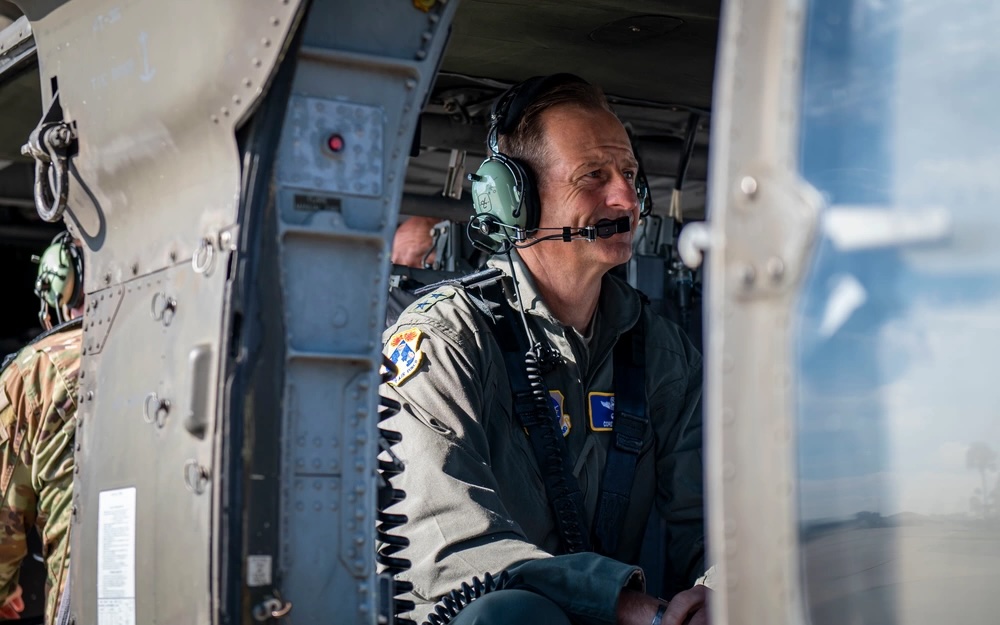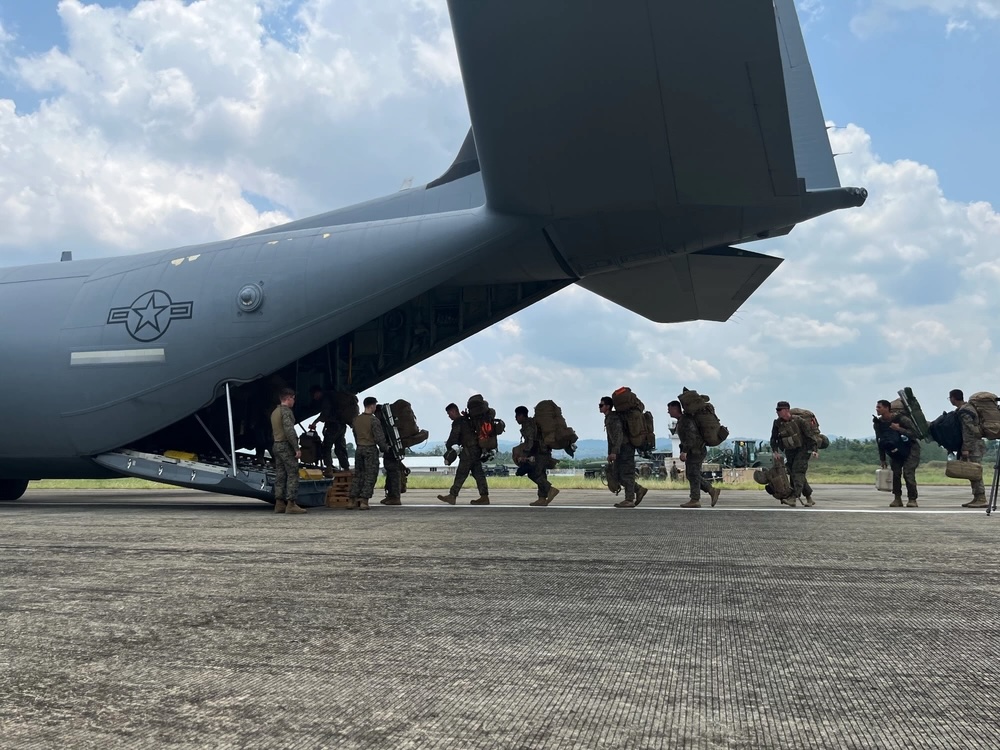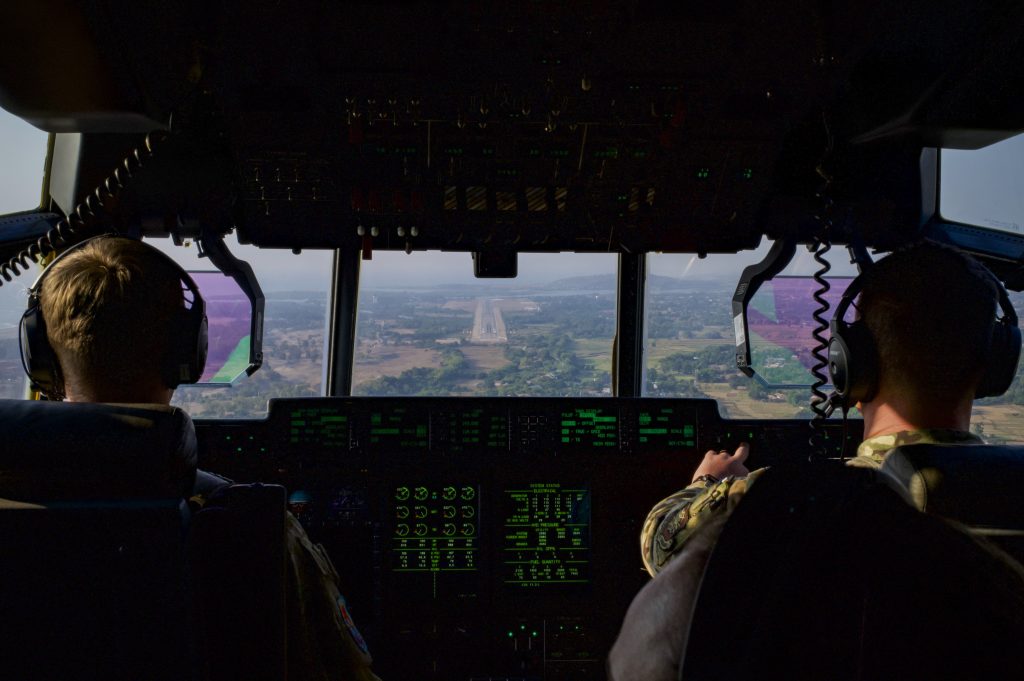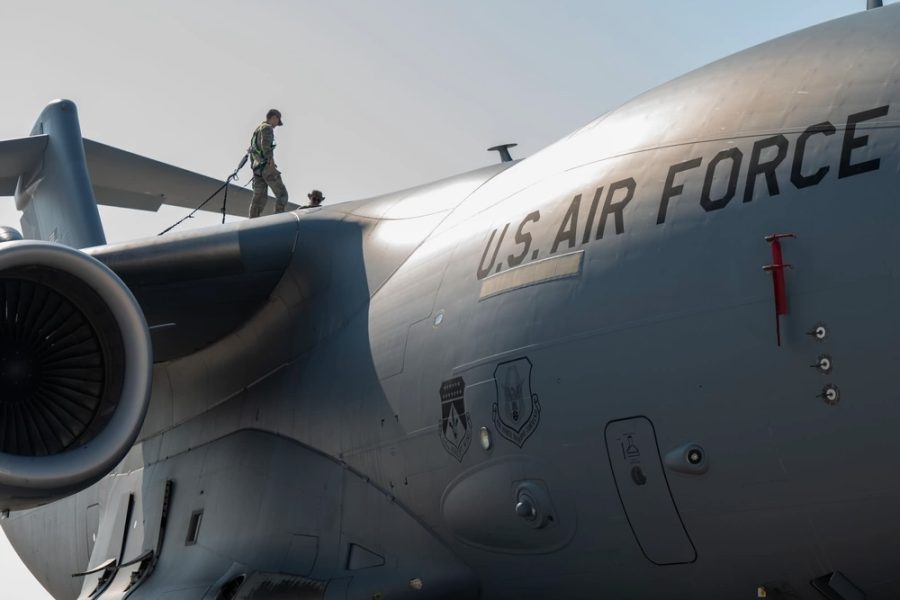The relentless demand for airlift, aerial refueling, and aeromedical evacuation means that the new Air Force Force Generation deployment schedule (AFFORGEN) may need to be tweaked to fit mobility Airmen, according to the outgoing head of the 18th Air Force.
AFFORGEN lays out a two-year cycle made up of four phases: prepare, certify, deploy, and reset, each of which lasts six months. The high demand for the 18th Air Force could clash with that.
“Our Airmen don’t necessarily have the luxury of having a six-month reset in the traditional sense that it was designed,” Maj. Gen. Corey J. Martin told Air & Space Forces Magazine. ”I understand why we have it, but for the 18th Air Force, as it was designed, it is probably not sustainable, because of the amount of operations we continue to do in that reset band.”
The only Numbered Air Force in Air Mobility Command, the 18th claims about 36,000 Airmen and civilians across 12 wings and more than 400 aircraft. Every three minutes around the clock, an aircraft assigned to the 18th Air Force is taking off or landing after refueling fighters on the way to a combat zone, hauling supplies for a humanitarian relief effort, or a wide range of other missions, Martin said.
The fleet has faced particularly high demand lately. For example, usually around 50 of the nation’s 222 C-17 transport jets are on a mission on any given day, but in the weeks following the Oct. 7 Hamas attack on Israel, that spiked to about 106.
“We have to be ready anytime,” Martin said. “Before Oct. 7, people did not expect that that’s where we were going to be focused. And immediately afterwards, we had aircraft bringing in air defense artillery to locations in the Middle East literally overnight in some cases.”

AFFORGEN is meant to help whole units train and deploy together, rather than the piecemeal approach over the past two decades where Airmen were often deployed in small batches from bases across the country. But it could be a tough fit for mobility forces, which may not be able to truly rest as the “reset” phase requires.
“That is probably where it would be difficult for us to stay exactly true to the AFFORGEN cycle as it was advertised,” Martin said.
Martin is not the first to raise such concerns. In January, Vice Chief of Staff of the Air Force Gen. James C. Slife said AFFORGEN is still being adjusted and that it will not be a one-size-fits-all approach, as the service writ large strains to meet the needs of combatant commanders.
“That’s the tension the secretary of defense has to deal with every single day,” Slife said at the time. “There’s an insatiable demand from combatant commands. There’s a limited capacity from the services.”
Units flying drones like the MQ-9 also face year-round operational tempo, as Maj. Gen. Clark J. Quinn described at the 2023 Air Warfare Symposium.
“The group commander over there mentioned that just a few weeks ago, one of his squadrons for the first time ever, was not flying a combat line,” Quinn, then deputy commander of Air Forces Central, said about an MQ-9 unit at Shaw Air Force Base, S.C. “[AFFORGEN] is not going to quite work out into six-month bins for that MQ-9 community just yet.”
Air Mobility Command is working with the Air Force to tailor AFFORGEN for mobility troops, Martin said. While the exact fit is yet to be determined, there is a precedent in the form of the Readiness Driven Allocation Process (RDAP), a tool which for the past four years or so has helped allocate mobility assets for operations and training.
“RDAP helps us balance what we call risk-to-mission: our ability to respond, and risk-to-force,” Martin explained. “My responsibility is not only to have forces ready today, but I also have to be thinking about ‘Can I have forces ready in six months?’ We can’t burn everything out now.”

Training For the Future
RDAP could also help wing commanders balance day-to-day operational demands with the need to train for possible conflict with China or Russia. One key technique is what Gen. Mike Minihan, the head of Air Mobility Command, calls “explode into theater,” where mobility troops race from their home stations to the conflict zone as quickly as possible.
That ability is important because the Air Force likely will not have months to build up strength for a future conflict as it has for conflicts in the Middle East over the past several decades, Martin explained. Mobility wings are practicing the technique in exercises such as Hazard Leap and Hazard Spear, where a C-130 transport crew flew 26 hours from Texas to Guam to support a Marine training operation in the Philippines, and Project Magellan, a maximum endurance operation where a Kansas-based KC-46 flew nonstop around the world in 45 hours.
Those drills are great examples of exploding into theater, Martin said, but they require time and resources that mobility troops may not have in spades due to their high ops tempo. RDAP and AFFORGEN will have to account for those needs, but in the meantime, it helps that Minihan and Martin encouraged wing commanders to accept a higher level of risk so that Airmen can practice other wartime skills, such as landing on a blacked-out airfield or refueling aircraft with the engines running, which saves time on the ground.
“There is a slightly elevated risk with engines running and refueling operations, but with the amount of precision artillery that adversaries have, being on the ground is probably a less safe place than being in the air,” Martin said.
Those kinds of tactics, techniques, and procedures were not so widely practiced just a few years ago, the general said, but the blessing from higher-ups to take more risk makes it more common.
“There is an increase of risk, but we’ve gone about it in a responsible way, and we need to fill some of the gaps,” he said.

Connecting and Commanding
If training and ops tempo were not enough to handle, 18th Air Force troops are also pursuing new beyond-line-of-sight communications technology that will keep mobility aircraft plugged in with other aircraft and operations centers hundreds of miles away.
While such systems are widely available in other parts of the Air Force such as Air Combat Command, Air Mobility Command is still getting up to speed in terms of connectivity. Last year, Minihan set a goal to connect 25 percent of the tanker and transport fleet with beyond-line-of-sight communications by 2025.
Rather than wait for a more comprehensive funding solution from higher levels of the service, wing commanders at the 18th Air Force are using discretionary income funds to buy roll-on, roll-off comms systems such as RTIC and the Airlift Tanker Open Mission Systems.
“We are not sitting idly by and waiting,” Martin said. “Wings at the 18th Air Force level are finding ways to try to plus those up as the Air Force looks for ways to fund it more holistically.”
At the same time, mobility Airmen still need to perform when enemy interference makes long-distance communication impossible. Coming up in the early 1990s when comms tech was not as advanced, Martin recalls being taught the importance of mission command, where subordinates get after the commander’s intent despite loss of contact with the commander.
“The majors and lieutenant colonels that were instructing me to fly had grown up in a time where they had to understand mission command, because they were not always connected to a global command and control network,” he said.
Technology and the loss of a chief rival in the form of the Soviet Union allowed the Air Force to drive for efficiency, at the loss of some crew autonomy, the general explained. Now, existing networks may not be available against adversaries such as China and Russia with sophisticated electronic warfare systems.
“We have to get the force adequately connected, but in the interim, we are developing a crew force that is able to, in the absence of it, to be able to take commander’s intent, and to have that initiative,” Martin said.
After more than 30 years in service, Martin will retire Aug. 9 and relinquish command of the 18th Air Force to Maj. Gen. Charles D. Bolton. It is a busy time for the Numbered Air Force, but Martin is encouraged by the dedication of its Airmen.
“Every three minutes, 18th Air Force aircraft are taking off or landing as most Americans have the opportunity to sleep six or eight hours,” he said. “The fact that there are mostly young men and women who signed up to do that for their country around the clock … makes me proud to be the 18th Air Force commander. And as my time in the service is coming to an end, it makes me encouraged for the force that we have for the future.”
